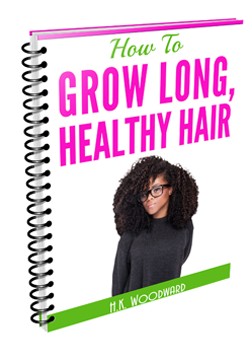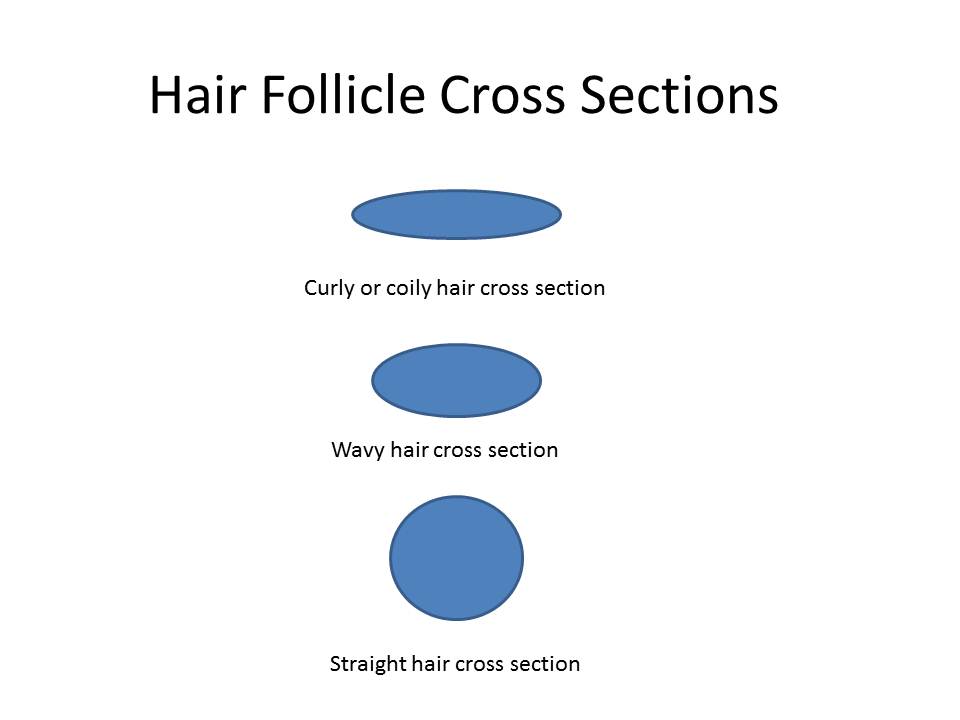|
One of the most annoying questions I was ever asked was "Why do you (i.e. black people) need to have different products anyway? Why can't everyone just use the same products?" - what was annoying wasn't the questions itself but the fact that the person didn't even let me answer. They just continued talking and every time I interjected with "Can I answer your question?" They just talked over me and ignored me. I was still annoyed about 2 months after the incident! I know, that's ridiculous - other people's stupidity should never impact one's emotions like that.
Anyhow, if you cut through the hair strand of someone with naturally straight hair you would find that the cross-section is round. Curly hair on the other hand has a flattened oval or elliptical cross section, this however is only one difference. It is the feature that gives our hair it's very curly shape. In addition, African/African-American hair:
The fewer the number of layer the more chemicals can be used to change the hair - so a person with a 7-layer cuticle will take chemicals more easily than a person with an 11-layer cuticle; remember those people who complain that their hair just doesn't take relaxer? They probably have a thicker cuticle layer. That said, flatter (elliptical) hair strands are easier to treat with chemicals so black hair may ultimately be easier to chemically manipulate. In summary, besides the curl that you see, different hair types have varied structural and chemical features that impact how products work with the hair. This is why different hair types needs slightly different products.

I know some people do a rinse before shampooing but really it is much more effective to do after conditioning but before applying a leave-in conditioner.
Why? The reason is simple: both lemon and ACV are acidic. This means that they cause the cuticle layer to contract and flatten. A flattened cuticle layer is closed to the entry of moisture and other products so if you plan on doing a deep condition after the ACV or lemon rinse, you're working against it. For an effective deep condition you want the cuticle to be more open and to ensure this this you shouldn't be rinsing with something acidic just beforehand. Once you've done your deep condition and rinsed off the conditioner the ACV or lemon rinse (or whatever other acidic rinse you choose) will close the cuticle layer thereby:
You can further rinse the ACV or lemon rinse with cold water to get any smell off. As the acidic rinse has already done its job of sealing the cuticle layer this follow-on cold water rinse is NOT counter productive. 

Shampoos are generally formulated as mildly acidic with a pH ranging from 4 to 6.
The corresponding conditioner is then formulated to be more acidic with a pH ranging from 3.5 to 5.0. Why does this matter for your hair? As pH falls hair constricts and becomes less porous, i.e. your hair retains moisture much better and is shinier. This means that as you clean your hair, the lower the pH of the final product used in the process, the better your hair cuticle is sealed off. What if you don't want to use a shampoo and conditioner in the same line? There are a couple of simple solutions:
 Vegetable oils have low acidity Vegetable oils have low acidity
So, you've just learnt that healthy hair has a pH of 4.0 to 5.5 and you're frantically trying to figure out the pH of your:
> argan oil / avocado oil / castor oil / coconut oil / flaxseed oil / grapeseed oil / jojoba oil / olive oil / sesame oil / sunflower oil / sweet almond oil or something else I have news... The acidity or alkalinity of oils cannot be measured using pH because they do not contain any water. pH can only be determined for water soluble liquids because it measures the hydrogen concentration in an aqueous solution. That said, most vegetables oils are weakly acidic. Olive oil is alkaline (the most alkaline of vegetable oils); flaxseed and canola/rapeseed oil are also alkaline. Another methodology, not pH, is used to determine this. 
You might also like: What is the pH of healthy natural hair? Why does it matter? What happens to natural hair at different pH levels? Get your FREE ebook on How To Grow Long, Healthy Natural Kinky or Curly Hair.
pH is a measure of how acidic or alkaline a substance is:
Hair is not tolerant to extremes of pH, this is what happens to it as pH changes:
You might also like:
What is the pH of healthy natural hair? Why does it matter?
pH measures how acidic or alkaline a substance (usually a liquid) is. Healthy hair and skin both have a pH ranging from 4.0 to 5.5 (this is acidic).
This film of acid that covers skin is called the acid mantle; it acts as a barrier to undesirable toxins, viruses and bacteria that try to enter the body. As most of these contaminants are alkaline they are neutralised by the body's acid mantle. Put simply, the scalp's acidity protects it from infection.
What is the pH of shampoos?
Shampoos are normally mildly acidic with a pH of 4 to 6. What is the pH of conditioners? Conditioners are normally more acidic than shampoos with a pH of 3.5 to 5.0. Is the decrease in pH as we move from shampoo to conditioner intentional? Yes. The lower pH of the final product used in the cleaning process helps to seal off the hair; sealing the hair means fibres are smoothed down and moisture is held in better. What does this mean for your hair regimen? It is much better to use products in the same product line as they are designed with this fall in pH from initial to final product in mind.
What is the pH of relaxer and permanent hair colouring agents? They are all alkaline with a pH ranging from 10 to 13. What is the consequence of using these strongly alkaline products in hair?  Cross-section of hair Cross-section of hair
You might also like: What happens to hair at different pH levels? Reference: The Science of Black Hair, pages 44-45
|
I now blog about wealth creation - so if you have any money questions meet me there, you can do all sorts of cool things like leave me a voicemail.
By Heather Katsonga-Woodward
I was a natural hair blogger and mixtress living between London & Chicago from 2012 to 2017. I always thought I was 4C but some say 4B; images below - you decide! Heather xx Categories
All
Archives
November 2016
|





















